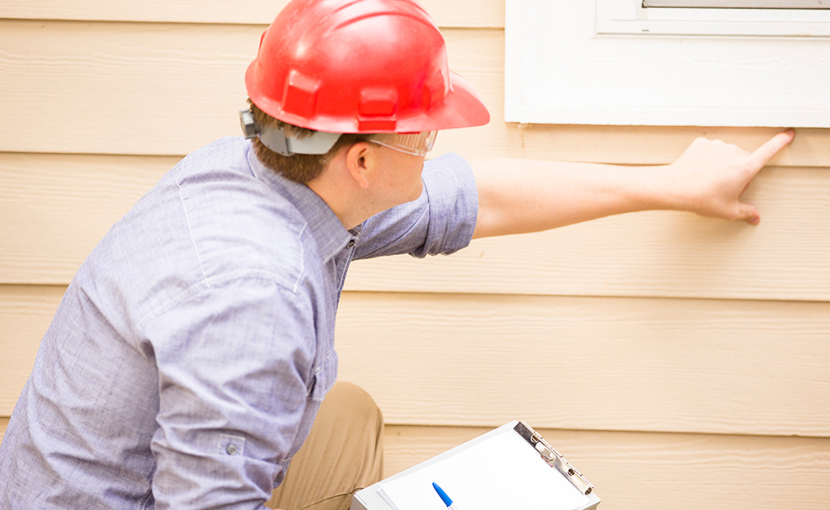Home inspectors visually inspect house and apartment systems and components. They look for damage, evidence of deterioration, amateur maintenance work, and improperly installed components. Potential buyers or sellers hire them to prepare detailed reports. Reports may be narrative or may include detailed checklists with photo images, and notes about problems and what could happen if repairs are not made. To avoid potential conflicts of interest, home inspectors cannot sell real estate or repair problems identified during inspections.
Inspectors may probe structural components that show signs of deterioration if they can do so without damaging finished surfaces. Otherwise, they note their observations in reports and may recommend further evaluation.
On building exteriors, home inspectors check items such as:
- Foundations
- Wall coverings, flashings, and trims
- Doors and windows
- Attached decks, balconies, stoops, steps, porches, and railings
- Eaves, soffits, and fascias that can be accessed from ground level
- Vegetation, grading, surface drainage, and retaining walls that might adversely affect the building
- Walkways, patios, and driveways
On the roof, they check:
- The roof covering
- Drainage systems
- Flashings
- Roof penetrations such as skylights, vents, and chimneys
An inspection from the ground or roof-edge is acceptable if the roof is unsafe.
Inside, they check items such as:
- Plumbing systems, including fixtures and faucets, drains, vents, and water heating equipment
- Electrical systems, such as service equipment and main disconnects, panels, conductors, over-current protection devices, and fixtures such as switches and receptacles
- Heating and air conditioning systems
- Fireplaces
- Walls, ceilings, floors, stairs, railings, and a sampling of cabinets
- Attics, basements, and crawlspaces
- Insulation and ventilation (when easily accessible)
Home inspectors do not normally check items such as chimney flues that are not readily accessible. They also do not check the operation of accessories such as air filters, water softeners, and lawn sprinklers. However, technology such as infrared cameras, flexible scope cameras, and drones are being used more and more to inspect concealed and hard-to-access components.
Inspectors who offer extra services, such as fireplace, septic tank, or well inspections, are performing the duties of a general contactor. They must therefore obtain the insurance needed to protect themselves, as these services are most often sub-contracted.



